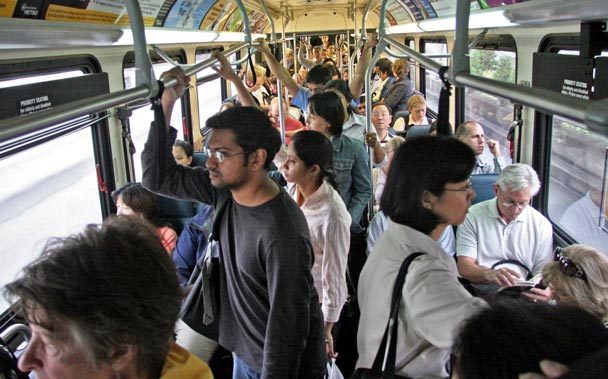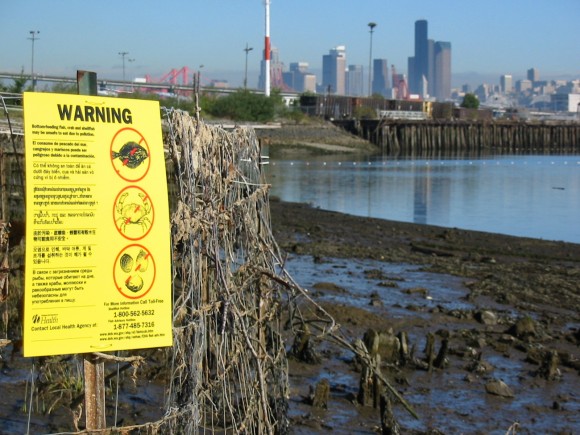Now that Proposition 1 has passed, let’s get into the nitty-gritty of who will see a wage boost and better standards. In our previous post, we highlighted that only companies that meet a size and employee threshold are covered. Over the past nine months, we have obtained data on employer sizes from the Port of Seattle, Hoovers, King County property data, the Puget Sound Book of Lists and union organizers to compile our estimates of who is covered. Below you’ll find our projected list of workplaces where living wage requirements should kick in on January 1st, 2014.
Note that the list is meant to be a guide, not a definitive answer to whether a particular company is covered or not. For example, we may over-estimated employment for firms on the edge of Proposition 1’s threshold, and included them when they are not actually covered. Or companies may have grown or shrunk since we made our estimate. But, most of the employers listed below are well above the thresholds and we are confident that they are covered. (The lists below are ordered by largest to smallest.)
Rental Car Agencies (and their contractors)
There are approximately 16 rental car agencies (and companies contracted to provide those agencies services) operating in SeaTac. Below are seven that we estimate have more than 100 vehicles and 25 or more workers in SeaTac.
National
Hertz
Golden Gate of Orlando
GCA Services Group
Avis Budget Group
Enterprise Rent a Car
Advantage
Hotels
Hotels or motels with over 100 rooms and more than 30 non-managerial employees will be covered by Proposition 1. Below are two lists – one for hotels that we project meet both criteria and one for hotels that meet the room requirement but may or may not meet the employee threshold.
The following hotels are primarily the big ones on International Blvd, near SeaTac Airport. We know the number of rooms at each hotel from King County Assessor’s information. From other analysis, we estimate that they all have 30 or more employees.
| Hotel |
Rooms |
| DoubleTree Hilton |
850 |
| Marriott |
459 |
| Hilton Seattle Airport |
396 |
| Holiday Inn |
260 |
| Clarion Hotel |
214 |
| Radisson |
204 |
| Red Lion |
144 |
| Cedar Brook Lodge |
102 |
| Hampton Inn |
218 |
| Holiday Inn Express |
171 |
| Ramada |
156 |
The hotels below meet the room number requirement, but may or may not meet the 30 worker threshold. We cannot confirm that these are covered by Prop 1 and did not include them in our prior estimates of the number of firms covered or workers affected.
| Hotel |
Rooms |
| Sleep Inn |
105 |
| Fairfield Inn |
147 |
| Red Roof Inn |
152 |
| La Quita Inn |
143 |
| Coast Gateway |
143 |
| Best Western |
140 |
| Hampton Inn 2 |
130 |
| Comfort Inn |
119 |
| Super 8 |
119 |
| Motel 6 |
109 |
| Quality Inn |
104 |
On-Airport Transportation Employers
There are hundreds of businesses that do business at the airport: however, only a relatively small number related to air travel passengers and cargo are specifically covered by the initiative. The list below includes companies that provide services defined in Proposition 1 and which we estimate have 25 or more employees at Sea-Tac Airport.
Menzies Aviation Group
Federal Express Corp
Bags Inc
Airserv
DAL Global Services
Swissport US
Flight Services & Systems
Huntleigh/ICTS
Prime Flight
Aircraft Service Intl
Worldwide Flt Svcs
Intergrated Airline SVCS
World Service Co
Prospect
Swissport Cargo SVCS
InterCruises
Aviation Safeguards
Hanjin Global
Swissport Fueling Inc
Matheson Postal SVCS
Menzies Aviation Cargo
Note that we estimated the size of these on-airport companies based on Port of Seattle security badge data obtained in January 2013.
Institutional Food Service or Retail Employers
These employers provide food service in public facilities, corporate cafeterias and meeting facilities. The list below includes companies operating at Sea-Tac Airport that we estimate have a minimum of ten or more non-managerial or non-supervisory employees. Note that many individual stores at Sea-Tac Airport are actually operated by HMS Host and Hudson News Group, so will not show up on the list. These two companies account for nearly two-thirds of all workers in this category.
HMS Host
Hudson News Group
Concourse Concessions LLC
Concessions Intl
Filo Foods LLC
Massage Bar Inc
Latrelles Express Inc
Qdoba Rest Company
Beechers
Food Systems Unlimited
VIP Hospitality
Fireworks LLC
Butter London
SeaTac Bar Group
Ivars Inc
Pallino Pastaria
Sodexo Magin
Exofficio
Dilettantes Mocha Bar
Travelex Currency Services
Body Shop
Vino Volo
In a recent Seattle Times article, the co-owners of an airport Quiznos also projected that their company will hiring more workers and may be covered soon.
Parking Lots and Garages
Parking lots and garages with over 100 spaces and over 25 employees are covered by the initiative. (This excludes parking lots at stores and smaller parking garages in the city of SeaTac.) We estimate that three parking companies, operating six facilities, meet both the employee and the employer threshold. Other parking lots in SeaTac have more than 100 spaces, but likely fewer than 25 employees.
Doug Fox Airport Parking
Masterpark
Wally Park
Ground Transportation/Shuttle Firms
Shuttle and bus service providers that own ten or more shuttles, vans and busses, and employ more than 25 non-managerial employees in SeaTac are covered by Proposition 1. Although many companies run shuttle services to the airport, from around the Puget Sound and from Eastern Washington, only one operates primarily in King County – Shuttle Express. (Other companies may or may not be covered based on how their fleet and number of employees are counted.)


